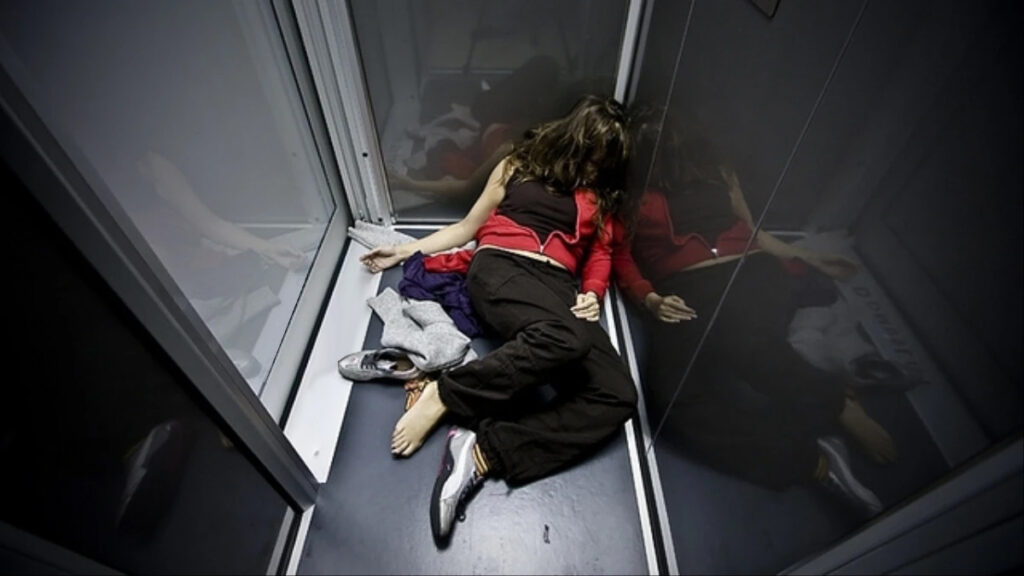VIEW Sense helps in an elevator emergency
Automatic detection of emergencies and dangerous objects
VIEW SENSE is the result of a VIEW research project that uses image analysis and artificial intelligence (AI) for the early detection of suspicious or critical situations. The system pays attention to defined movement patterns and automatically informs, for example, an emergency call center, security service or hotel lobby about suspicious and critical processes. Medical emergencies such as unconsciousness or unaccompanied objects are recognized.
VIEW SENSE is the basis for the intelligent “Emergency Call 4.0”, which actively ensures safety in elevators and makes the emergency call button superfluous.
VIEW SENSE - a guardian angel always rides in the elevator
Non-binding inquiriesIf there is an emergency in the elevator, help VIEW Sense with an auto-responsive emergency call
- is like a lift attendant who is always on board – 24 hours a day, 7 days a week
- guarantees optimal security through automated emergency detection and faster, targeted assistance
- transforms the “fear room” elevator car into a comfort zone of safety
- reduces the operator’s liability risks
- relieves emergency call centers
- reduces false alarm costs
- reduces the risk of vandalism
Medical emergencies
In the most dangerous emergencies in the seclusion of the elevator car, nobody presses the button. It’s good that the Guardian Angel is in the elevator.
There are situations when traditional emergency call systems are simply not enough. Emergencies in particular, in which one no longer has the opportunity to press an emergency call button, are particularly dangerous. Be it the fall of a frail person after whom it is impossible to think of getting up without outside help. Or, for example, sudden loss of consciousness as a result of a cardiovascular problem. In these potentially highly critical medical emergencies, rapid help is essential. In heart failure, literally every second counts. How good would it be if the elevator could recognize these dangers itself and automatically notify the emergency call center?

VIEW Sense – a guardian angel always rides in the elevator
VIEW SENSE ensures that elevator cars are an active safety zone around the clock. VIEW SENSE pays attention to the personal safety of passengers. Critical situations are recognized in real time and help or rescue measures are triggered automatically. VIEW SENSE is the first autoresponsive Emergency call system and shows its strengths where conventional emergency call systems reach their limits.
VIEW SENSE defines the current state of the art in elevator emergency calls
Conventional emergency call systems have their origins in the last millennium. Their function is limited to two-way communication. If there is no communication, a fee-based exemption is required. VIEW brings the emergency call system into the age of smartphones. Communication takes place in the two-senses principle and can therefore also be used by people with speech and hearing impairments. Come anyway If communication is not established, false alarms or acute emergencies are reliably detected by the emergency call center using an emergency camera. The optional VIEW SENSE system detects acute emergencies, such as loss of consciousness, using depth sensors, image analysis and artificial intelligence. The system automatically alerts the emergency call center.
Recommendations for action for elevator operators on the subject of an elevator emergency
Due to the traffic safety obligation, the operator of a facility bears certain liability risks.
A traffic safety obligation applies to those who create particular sources of danger. (Attention: in the sense of the traffic safety obligation, making an elevator available means creating a “danger”). It justifies the need to take special precautions to protect third parties, which, according to the safety expectations of the respective traffic, are suitable to avert dangers for third parties that threaten when used as intended. For tradespeople who open buildings to the public, the security requirements are particularly high. According to the rulings of the BGH, the content of the duty to maintain safety is regularly specified in technical regulations and accident prevention regulations.
